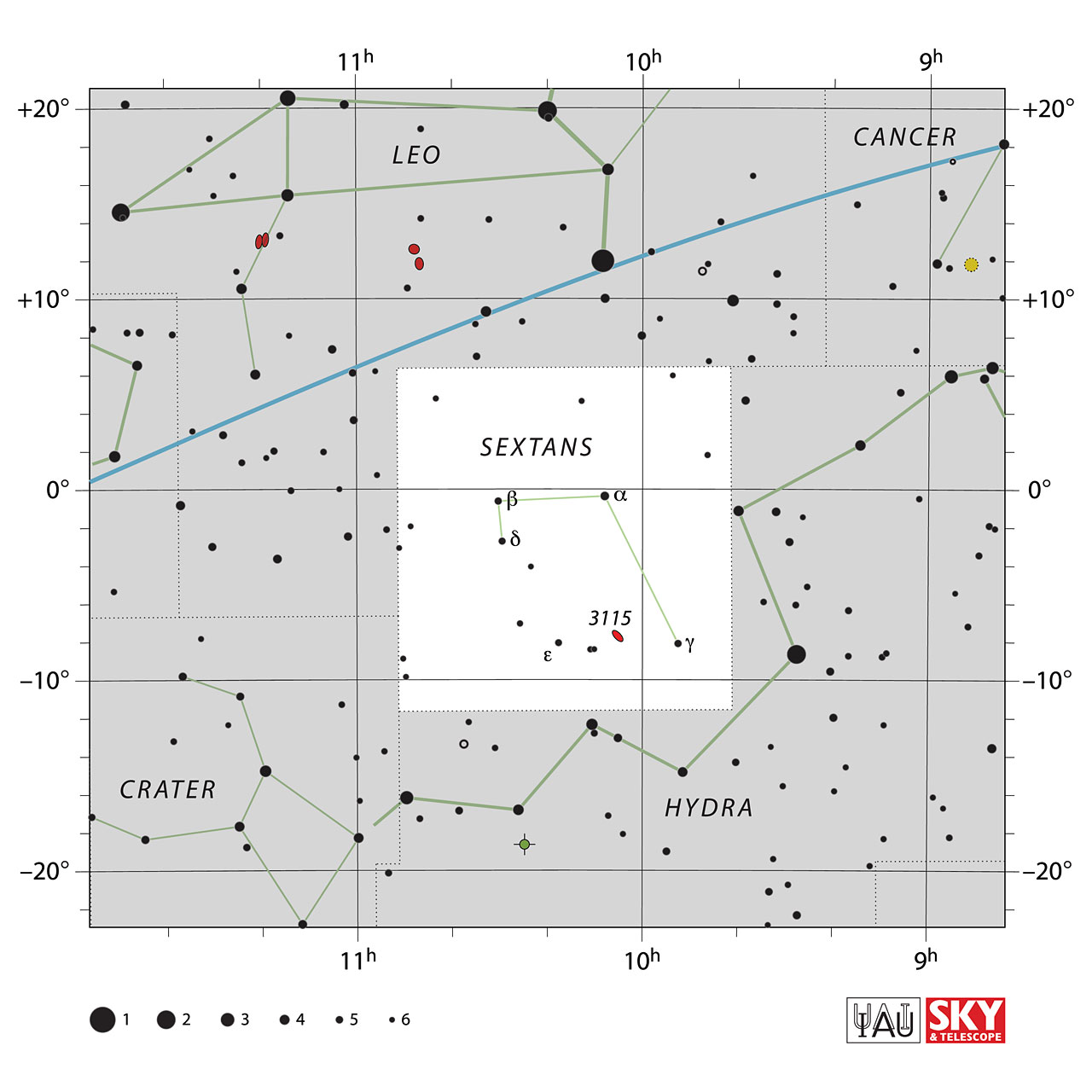Sextans


Sextans is a faint equatorial constellation which appears highest in the evening sky in the months around February.
It was introduced by the Polish astronomer Johannes Hevelius in 1687, covering a dark patch of sky immediately south of Leo, and represents a sextant, an instrument used to measure the positions of stars. Specifically, it represents Hevelius’s own sextant, which was destroyed by a fire at his observatory in Danzig in 1679.
Its brightest star is of magnitude 4.5, and it contains no bright deep sky objects.
The Indian name for Sextans is ಷಷ್ಠಕ (Shashtaka).
Sextans contains:
-
Stars
- α-Sex (mag 4.5)
- β-Sex (mag 5.1)
- γ-Sex (mag 5.1)
- δ-Sex (mag 5.2)
- ε-Sex (mag 5.2)
- HD 90362 (mag 5.6)
- 18-Sex (mag 5.6)
- HD 84607 (mag 5.6)
- 19-Sex (mag 5.8)
- 41-Sex (mag 5.8)
- HD 93833 (mag 5.8)
- 17-Sex (mag 5.9)
- SS Sex (mag 5.9)
- HD 93655 (mag 5.9)
- HD 85709 (mag 5.9)
- HD 94014 (mag 6.0)
- 7-Sex (mag 6.0)
- 6-Sex (mag 6.0)
- HD 90763 (mag 6.0)
- HD 89033 (mag 6.1)
- HD 87262 (mag 6.1)
- 14-Sex (mag 6.2)
- HD 88372 (mag 6.2)
- 4-Sex (mag 6.2)
- 33-Sex (mag 6.3)
-
Open Clusters
- None
-
Globular Clusters
- None
-
Galaxy
- NGC 3115 (mag 9.1)
- NGC 3166 (mag 10.6)
- NGC 2974 (mag 10.8)
- NGC 3423 (mag 11.2)
- NGC 2967 (mag 11.6)
- NGC 3044 (mag 12.0)
- NGC 3055 (mag 12.1)
- NGC 3169 (mag 12.4)
- NGC 2990 (mag 12.8)
- NGC 3156 (mag 12.8)
- IC 651 (mag 12.9)
- NGC 3375 (mag 13.0)
- NGC 3365 (mag 13.0)
- NGC 3325 (mag 13.0)
- NGC 3340 (mag 13.2)
- NGC 3321 (mag 13.3)
- NGC 3110 (mag 13.4)
- IC 630 (mag 13.5)
- NGC 3035 (mag 13.5)
- IC 624 (mag 13.5)
- NGC 3023 (mag 13.5)
- NGC 2978 (mag 13.5)
- NGC 2980 (mag 13.6)
- NGC 3029 (mag 13.7)
- NGC 3385 (mag 13.7)
View Sextans in 3D 
Source: Wikipedia, in-the-sky.org
Image Courtesy: Sky&Telescope & IAU, Illustration Images linked from Urania's Mirror on Wikmedia Commons by Sidney Hall
Image Courtesy: Sky&Telescope & IAU, Illustration Images linked from Urania's Mirror on Wikmedia Commons by Sidney Hall
